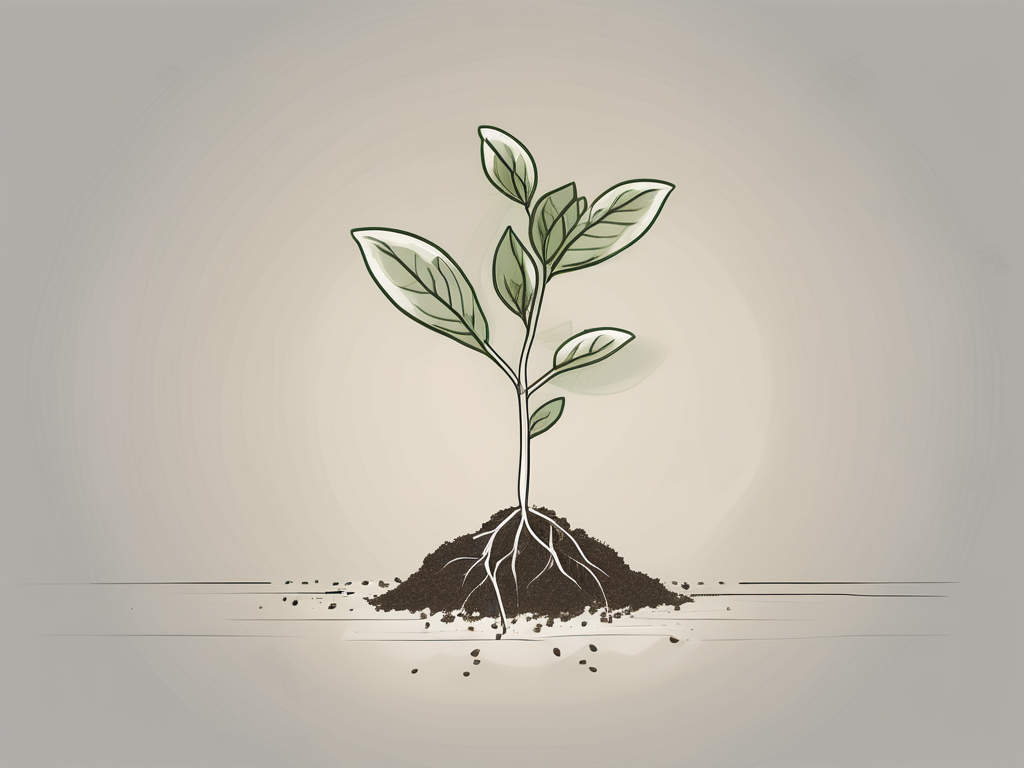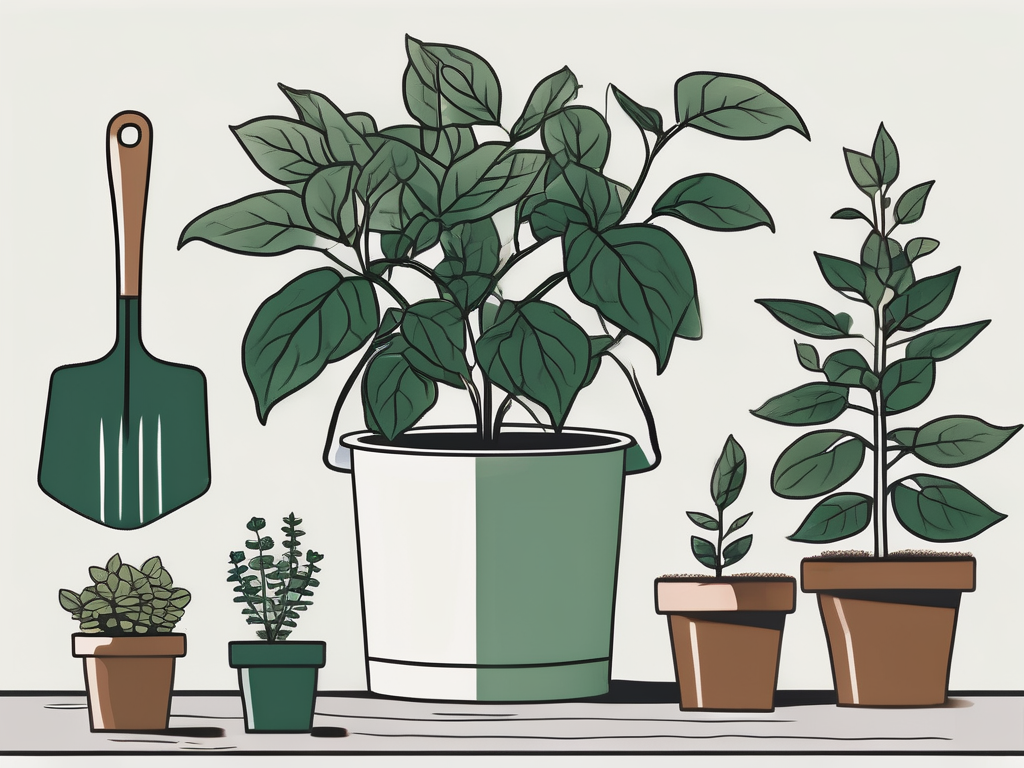
Philodendrons are a favorite among plant lovers, thanks to their striking leaves and easy-going nature. If you've ever thought about expanding your indoor jungle, propagating your philodendron in water is a fun and rewarding project. Not only is it simple, but it's also fascinating to watch roots develop right before your eyes.
In this guide, we'll walk through everything you need to know about this straightforward propagation method. From selecting the right cutting to caring for your new plant, you'll be well-equipped to grow your own philodendron collection. So, let's get started and turn those cuttings into thriving plants!
Selecting the Right Philodendron Cutting
Before you get started with propagation, it's crucial to choose the right cutting. Not all parts of the plant will root successfully, so understanding what to look for will set you up for success. Generally, you want to find a healthy stem with at least two or three leaves, as well as a visible node. The node is the part of the stem where leaves and roots grow. It's that little bump you'll see just beneath where the leaf meets the stem.
Here's a quick checklist to help you find the ideal cutting:
- Healthy leaves: Look for vibrant, green leaves without any signs of yellowing or damage.
- Visible node: A node is essential for root development. Without it, the cutting won't root.
- Strong stem: The stem should feel firm, not mushy or brittle.
Once you've selected your cutting, it's time to make the cut. Use a clean, sharp pair of scissors or a knife to make a cut just below the node. This ensures the plant has a fresh area to start developing roots. Keeping your tools clean is important to prevent any diseases from being transferred to your plant. Think of it like a clean slate for your new plant baby!
Preparing Your Cutting for Water Propagation
With your cutting in hand, it's time to prepare it for water propagation. Start by removing any leaves that might end up submerged in water. Leaves left in water can rot and cause bacteria to grow, which isn't great for root development. You want the stem to be as free as possible from any debris.
Next, take a moment to admire your cutting. It's about to embark on a new journey, and a little encouragement never hurts! Once you're ready, it's time to move on to the next step: choosing a container.
Choosing the Right Container
The container you choose doesn't have to be fancy, but it does need to be the right size. A small glass or jar is perfect because you'll be able to easily monitor root growth. Make sure the container is clean and transparent. This transparency isn't just for aesthetics; it helps you keep an eye on what's happening beneath the surface.
Fill your container with room-temperature water. Tap water is usually fine, but if you're concerned about chlorine or other chemicals, you might opt for filtered or distilled water. The main goal is to provide a clean environment for roots to grow.
Placing the Cutting in Water
Now comes the exciting part—placing your cutting in water! This is where you'll start to see the magic happen over the coming weeks. Simply submerge the node in the water while keeping the leaves above the surface. You might need to adjust the angle of the cutting to ensure it's stable and well-supported.
It's a good idea to change the water every week or so to keep it fresh. Stale water can lead to rot and might discourage root growth. Plus, your developing plant will appreciate the fresh supply of oxygen and nutrients.
Finding the Right Spot
Where you place your container can significantly affect how quickly roots develop. You want to find a spot that's bright but out of direct sunlight. Too much harsh light can damage the leaves and heat the water, which isn't ideal.
A windowsill with indirect light or a spot near a bright window can be perfect. It seems that finding the sweet spot for light ensures your cutting gets the energy it needs without any stress.
Caring for Your Cutting as It Roots
While your cutting is busy growing roots, there are a few things you can do to help it along. Keep an eye on the water level, ensuring the node stays submerged. If you notice any algae or cloudiness, it's time for a water change.
Be patient—root growth can take anywhere from a few weeks to a couple of months. The waiting game can be tough, but it's worth it! During this time, you can also monitor the leaves. If they start to look wilted or yellow, your cutting might be stressed. Consider moving it to a spot with slightly different lighting or temperature.
Encouraging Root Growth
If you want to give your cutting a little boost, you can use a rooting hormone. This isn't necessary, but it can expedite the root-forming process. Simply dip the node in the rooting hormone before placing it in water. If you're a first-time plant parent, this might give you a bit more confidence as you watch your cutting develop.
Transferring to Soil Once Roots Develop
Once your cutting has developed a decent root system—usually about two to three inches long—it's time to consider moving it to soil. While some plant people like to keep their cuttings in water longer, transitioning to soil can help the plant grow stronger in the long run.
Selecting the Right Pot and Soil
Choose a pot with good drainage, as philodendrons don't like to sit in soggy soil. When it comes to soil, a mix that's well-draining works best. Think of a mix that includes peat moss, perlite, and a bit of sand. This combination keeps the soil light and airy, which is perfect for new roots.
Gently transfer your rooted cutting to the pot, being careful not to damage the delicate roots. Fill the pot with soil, leaving a little space at the top for watering. Give your new plant a good drink to help settle the soil around the roots.
Ongoing Care for Your New Philodendron
With your philodendron now established in soil, regular care will help it thrive. Keep it in a spot with indirect light, and water it when the top inch of soil feels dry. Overwatering is a common mistake, so err on the side of caution.
Philodendrons are pretty forgiving, but they do appreciate a little attention. Consider wiping down the leaves occasionally to keep them dust-free and able to photosynthesize effectively.
Feeding and Fertilizing
While philodendrons don't require a lot of fertilizer, a balanced liquid fertilizer during the growing season (spring and summer) can give them a little boost. Follow the instructions on the packaging to avoid overfeeding, which can harm the plant.
With a little love and care, your new philodendron will grow happily, adding a touch of green to your space.
Common Challenges in Water Propagation
While propagating philodendrons in water is usually straightforward, there are a few challenges you might encounter. One of the most common issues is root rot, often caused by stagnant water or too much light. If you notice a foul smell or mushy roots, it's time to act quickly. Trim away the affected parts and refresh the water to give your cutting a fighting chance.
Dealing with Pests
Although less common, pests like spider mites or aphids can sometimes appear. If you see any tiny critters on your cutting, rinse the leaves gently under water. For a more thorough clean, a mild soap solution can help dislodge pests without harming the plant.
Regular checks and clean water are your best defense against these common issues.
Decorative Uses for Propagated Philodendrons
Beyond the satisfaction of growing your own plants, propagated philodendrons can be used in various decorative ways around your home. Water-propagated cuttings can add a minimalist charm to any space while rooting, and once they have moved to soil, they can become a centerpiece or an accent plant in your interior design.
Creating a Green Oasis
Group several small plants together to create a lush (without using the word "lush") focal point in a room. Mix and match with other plants of different textures and colors to create a dynamic visual experience. Hanging planters or macrame holders can add vertical interest and make the most of your space.
With a bit of creativity, your propagated philodendrons can enhance your home's aesthetic and make it feel more inviting.
Sharing Your New Plants
One of the joys of propagating plants is the opportunity to share them with others. Once your philodendron cuttings have matured, consider gifting them to friends or family. It's a thoughtful way to share your love of plants and perhaps inspire someone else to start their own indoor garden.
Plant Swaps and Community
Plant swaps are a fantastic way to meet fellow plant lovers and expand your collection. Bring a few of your propagated philodendrons and trade them for something new. It's a fun, social activity that can connect you with others who share your passion.
Whether you're giving a plant as a gift or participating in a swap, sharing plants helps build community and spread the joy of plant care.
Final Thoughts
Propagating philodendrons in water is a rewarding way to grow your plant collection. From choosing the perfect cutting to watching roots flourish, each step in the process is a chance to connect with nature and bring a little more green into your life.
At Cafe Planta, we love helping you on your plant journey. Whether you're seeking new plants, care tips, or just want to chat about houseplants, we're here for you. Feel free to email us, or reach out via Instagram. Let's grow beautiful, thriving plant collections together!












